[ZX Spectrum, MC Lothlorien]
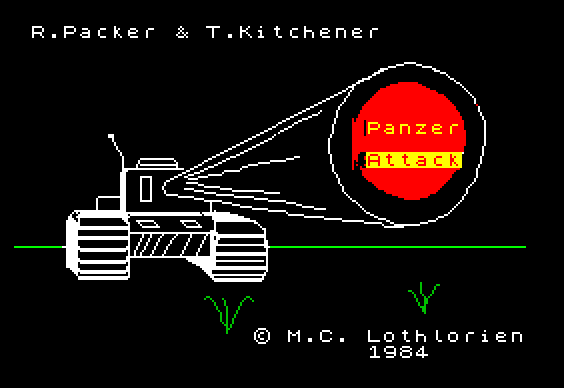
MC Lothlorien’s Panzer Attack covers a part of WWII that is usually more popular with the Americans than with the British: the battle of the Bulge. In the battle of the Bulge, the Germans threw their last forces against the Western Allies, hoping to capture the allied fuel stockpile to feed their advance.
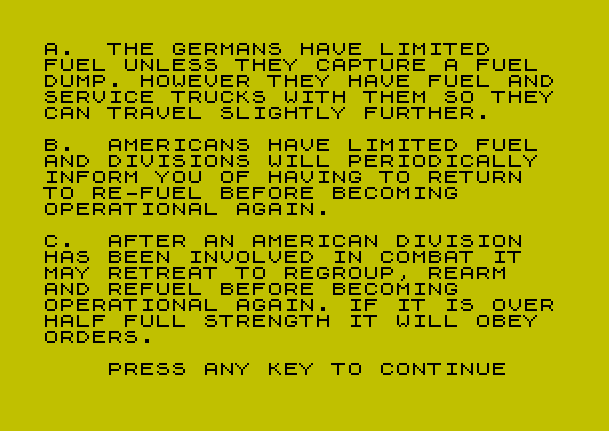
After a historical introduction and an explanation of the scenario, the game displays the list of commands and symbols:
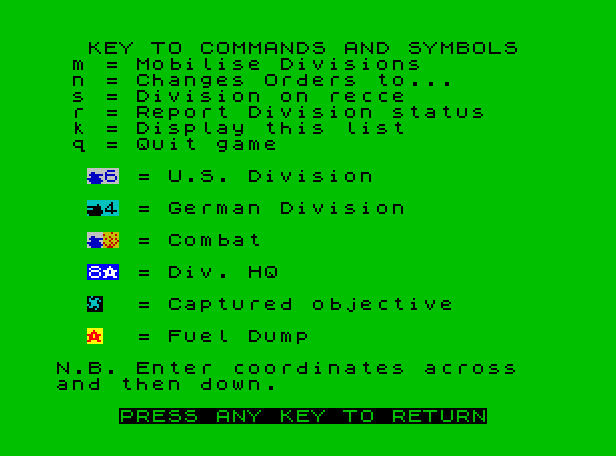
Wait! I have already seen that! Let me check…
… ah, found it! This looks exactly like this screen from Robert Erskine’s Battle of Britain!
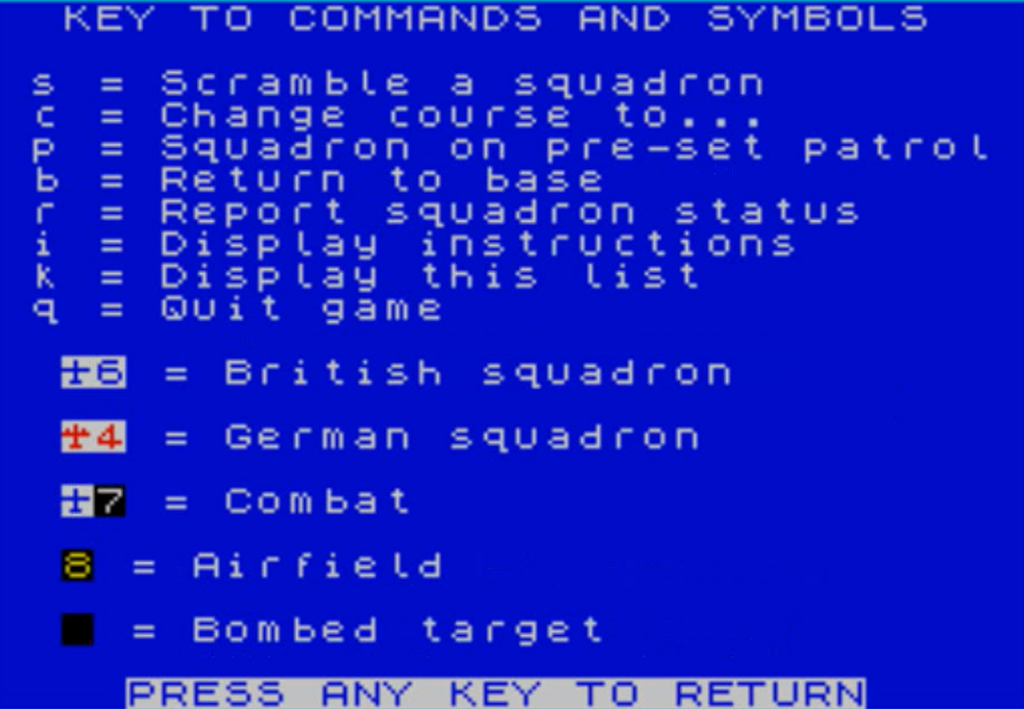
And indeed! While many games cover hypothetical scenarios like “What if the Soviets attacked NATO” or “what if the Germans had landed in UK”, Panzer Attack covers another kind of hypothetical scenario, namely “What if tank divisions behaved like planes during the battle of the Bulge?“
The game starts with my 9 airports HQs spread all over the map. My objective is to prevent the German tanks from reaching their target ammo dumps (the red star on yellow background) – if 200 tanks can refuel at the expense of the American taxpayers then it is a defeat.
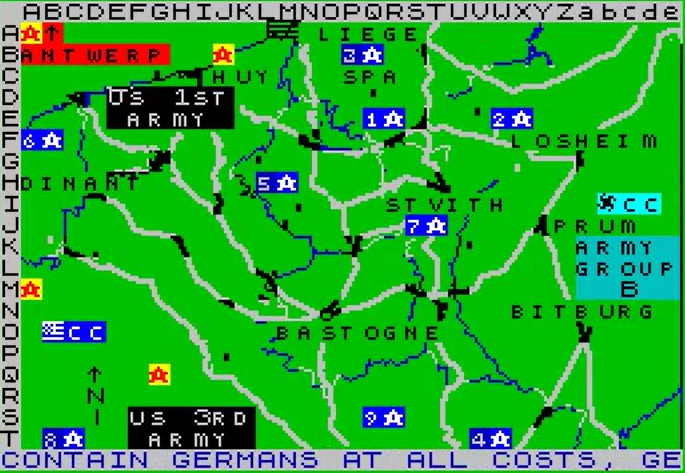
Soon after starting the game, German tanks appear on the horizon, their silhouette not against the rising sun but significantly below. I immediately order my tanks to take off from their HQs to intercept them.
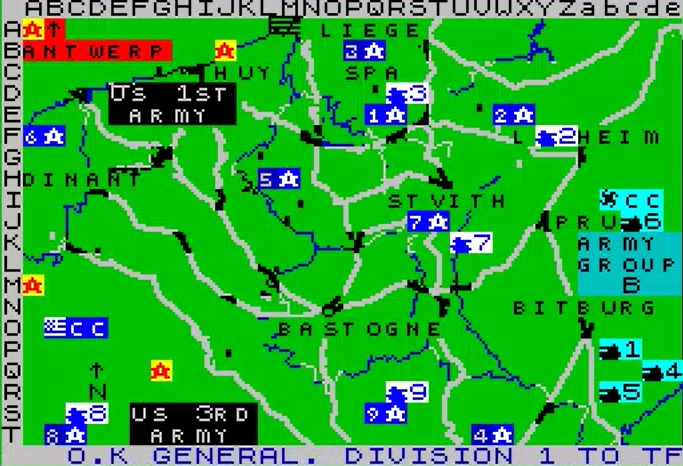
Soon, my ground squadrons meet the German ground squadrons. Tanks crews duel in their sluggish machines at zero altitude, trying to outmanoeuvre one another at low speed in a clumsy ballet of death.
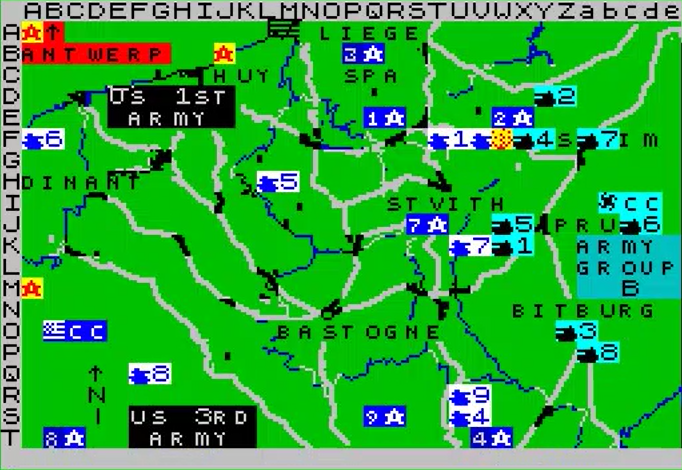
I lose the first clashes. My 2nd ground wing is annihilated, and the Germans penetrate further into allied groundspace. I scramble all my tank squadrons, and counter a German force trying to overrun Bastogne:
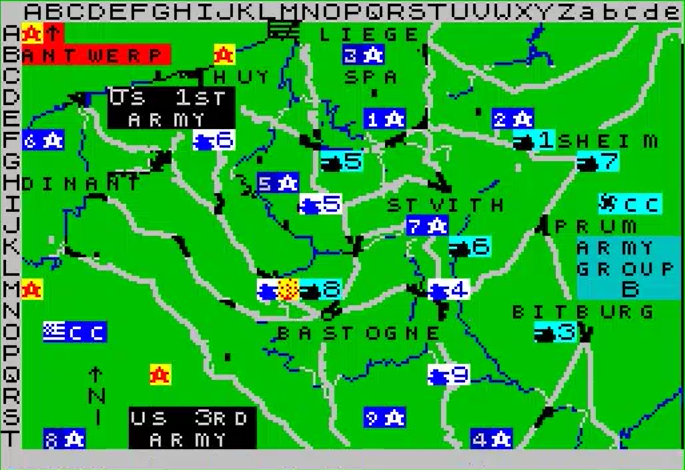
Alas, my units which participated in a combat must now return to their HQs to rearm and refuel. The German forward units dash through the opening and reach their impromptu gas stations.
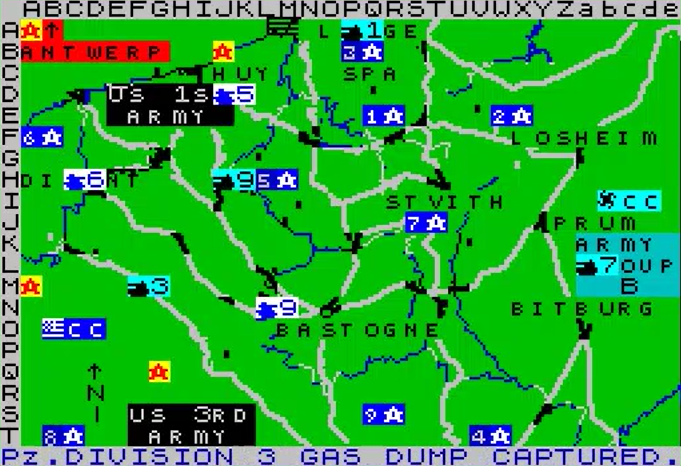
I wanted to counterattack with my group #6, which I had kept in reserve and had barely moved since the beginning of the campaign, but it ran out of fuel while doing nothing, because of course that’s what happened to planes in Battle of Britain. Why this unit cannot refuel in one of the nearby fuel dumps that it is supposed to protect, I don’t know.
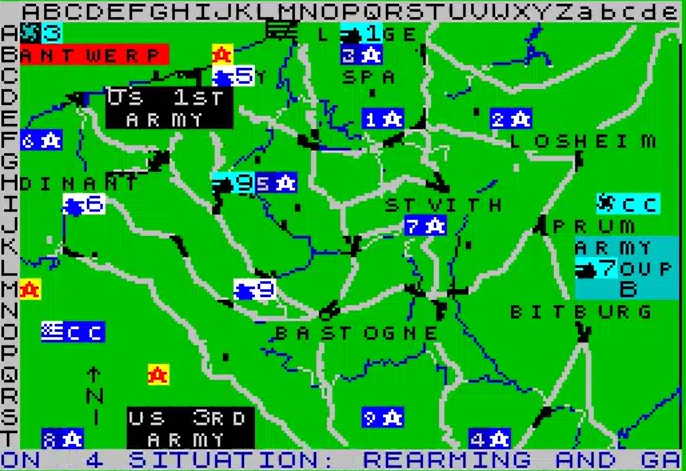
Eventually, more German groups reach the fuel dumps, and the Allies lose the battle of the Bulge.
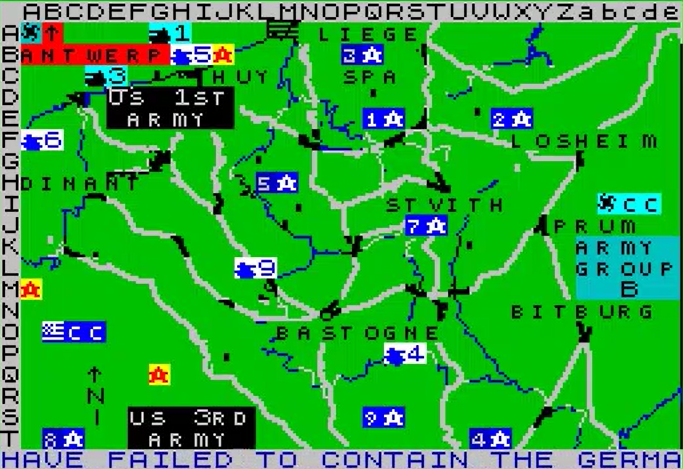
Ratings & Reviews
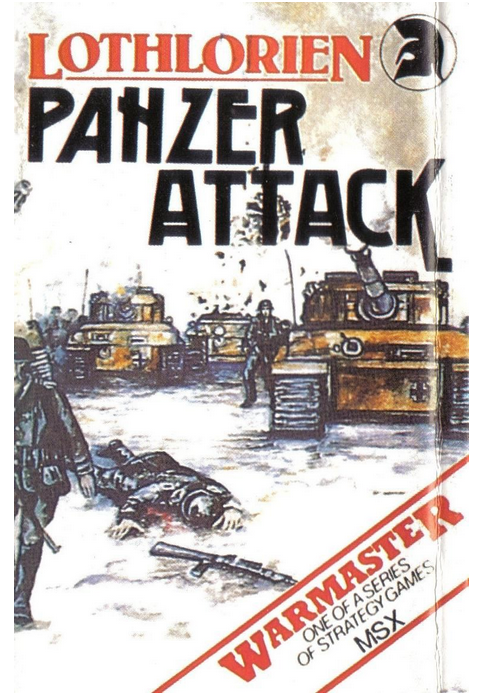
Panzer Attack, by R. Packer and T. Kitchener, but come on really by Robert Erskine, published by MC Lothlorien, UK, which should have known better,
Genre: Air Land Operations
First release: February 1985 on ZX Spectrum
Average duration of a campaign: 30 minutes
Total time played: 1 hour, because for some reason I played it twice,
Complexity: Easy (1/5)
Final Rating: Totally obsolete
Ranking at the time of review: 102/112
Panzer Attack is a clone of Erskine’s Battle of Britain attributed to R. Packer and T. Kitchener (no other game to their credit) and published by MC Lothlorien in early 1985. The conversion from the air to the ground is lazy and poorly thought out, with no terrain effect (the German units even go through the HQs as if they did not exist) and only one type of unit: tanks. Those tanks behave like planes: they operate from a fixed base, spend their fuel even when not moving and often have to return to their base after a battle to rearm and refuel. The result is that the player is constrained by Gamelin-esque operational rigidity even though the battle of the Bulge had showcased Patton’s ingenuity and ability to adapt to moving circumstances.
The worst part of the new design is that on the ground, there is no distinction between fighters and bombers. There are only tanks in the game, and they are both fighters (hard to fight) and bombers (you need to prevent them from reaching the objective) . This means that instead of having a gameplay designed around intercepting the air wings with the fewest escorts, the player has to engage everything they detect – no choice there – and the game is about making sure that all your tanks find their targets and hoping that the combats on which you have absolutely no control go in your favour. The scout reports include the number of tanks but also how many “infantry divisions” the enemy forces include, and those infantry divisions are never mentioned anywhere else in the game or in the manual, so I suspect the authors tried to create an equivalent to the fighter/bomber split but failed.
Once again, the game receives a Terrible rating in each of my categories (same reasons as Battle of Britain), and this time I felt I barely had to take decisions (“if I see it, I must intercept it“). The game is totally obsolete, and makes me regret not rating Battle of Britain a bit better so I could rate this one a lot worse. Spectrum Computing collected two reviews for the game, both from March 1985: Crash did not like it (“I’ve not had many kind words to say about Lothlorien in the past, so I would not have minded being able to say something nice about them now. Sadly, I can’t.”) and Micro Adventurer probably did not like it a lot either but was too polite to say it directly: the review keeps repeating why Combat Leader is so much better and then concludes with the following back-handed “compliment”: “Even with the faults, it is quite a good little game. I enjoyed playing it despite the problems, but then I didn’t have to pay for it.“.
We are not done with the Battle of Britain clones, but the next one is in 1987 so we have more time.
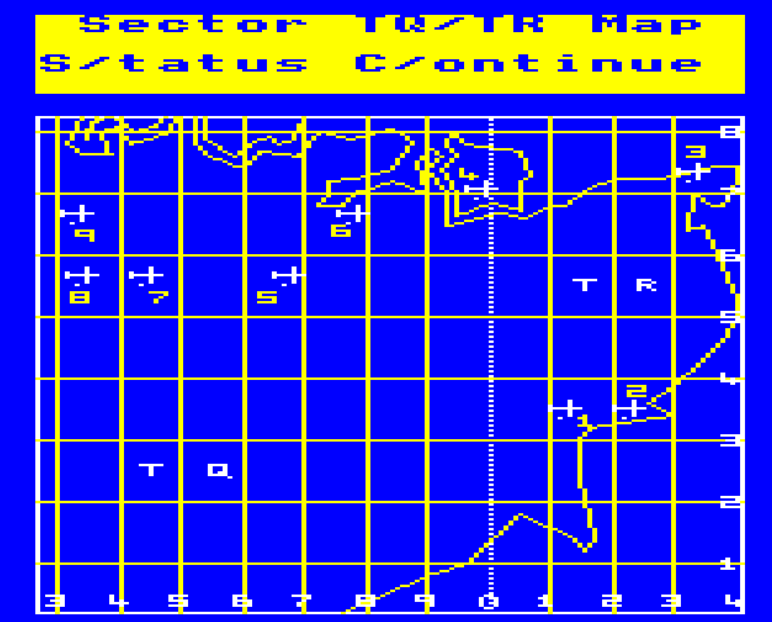
Next, we will move to an original game: After Pearl. Please note that I have not said it will be good.
3 Comments
“Tanks crews duel in their sluggish machines at zero altitude, trying to outmanoeuvre one another at low speed in a clumsy ballet of death.”
I kinda died at this one. Who knew they predicted low-level Warthunder gameplay thirty years in advance
It’s moderately astonishing that such a mediocre game inspired so many clones…
That was gloriously amusing. Well done!